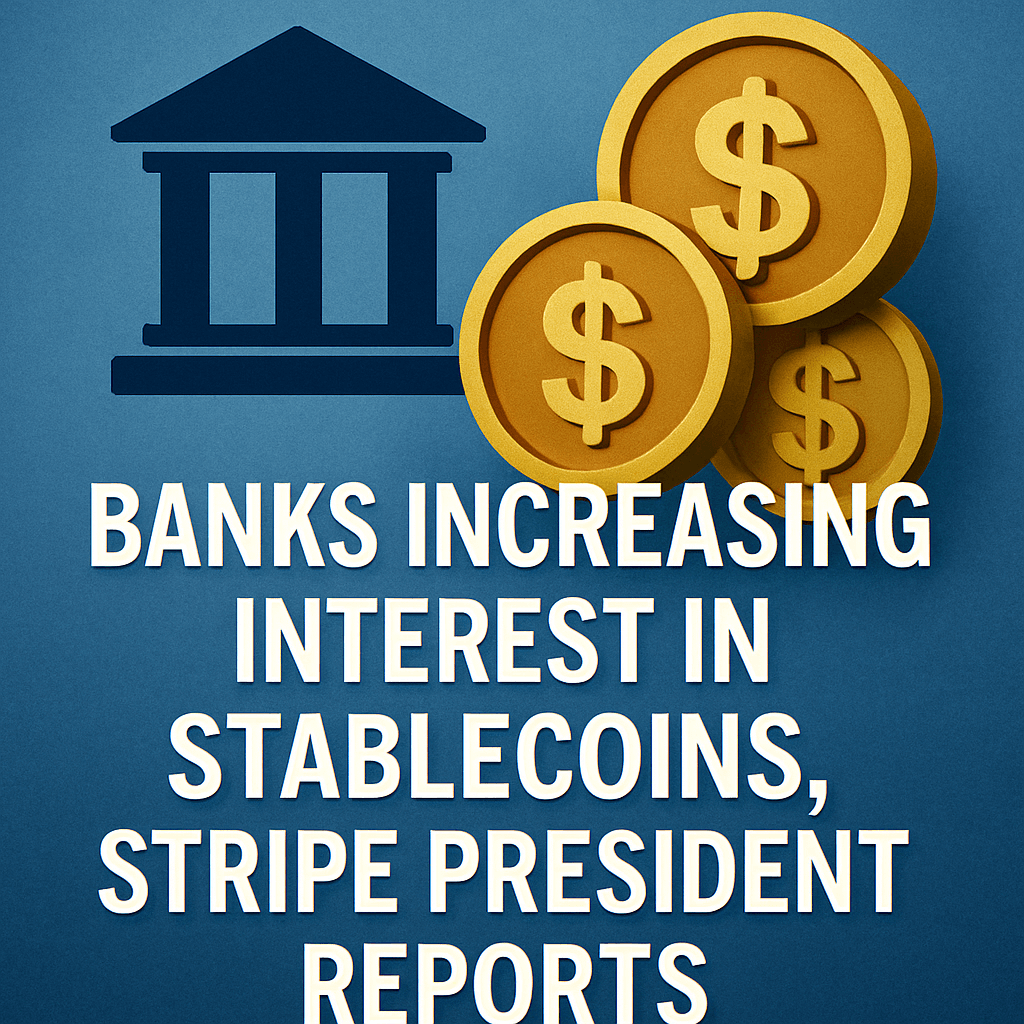Banks Increasing Interest in Stablecoins, Stripe President Reports


In a recent statement, Stripe’s president highlighted a notable surge in interest from banking institutions in the implementation and utility of stablecoins. This development signals a potential shift in the broader financial ecosystem, as banks explore integrating cryptocurrencies into their services, particularly in response to the evolving digital payment landscape.
Understanding Stablecoins
Stablecoins are a category of cryptocurrencies designed to maintain a stable value by pegging their worth to traditional assets, such as fiat currencies or commodities. The most widely known stablecoins, like Tether (USDT) and USD Coin (USDC), aim to offer the best of both worlds: the stability of fiat currencies along with the advantages of blockchain technology, such as faster transaction speeds and lower fees.
Banking Interest in Stablecoins
The president of Stripe noted that banks are increasingly recognizing the potential advantages of stablecoins. These include seamless cross-border payments, reduced transaction costs, and enhanced transaction transparency. Furthermore, banks see opportunities for stablecoins to help facilitate smart contracts and other automated financial instruments through blockchain technology.
Regulatory Roadblocks
Despite the growing enthusiasm, the widespread adoption of stablecoins by banks is likely contingent upon regulatory approvals. Current market conditions highlight a fragmented regulatory landscape that varies significantly between jurisdictions. For instance, the European Union has proposed regulations that would establish a comprehensive framework for the use of cryptocurrencies and stablecoins within its member states, emphasizing consumer protection and financial stability.
In the United States, the regulatory environment remains uncertain, with multiple agencies, including the SEC and CFTC, indicating different stances toward cryptocurrencies. Recent developments indicate that Congress is deliberating on clearer guidelines for digital asset regulations.
Implications for Financial Markets
As banks continue to evaluate stablecoins, several implications for financial markets may arise. If major banks adopt stablecoins for mainstream transactions, it could significantly enhance liquidity and operational efficiency across markets. Furthermore, the adoption of stablecoins could encourage innovation in financial instruments.
Expert Insights
Financial analysts from the cryptocurrency sector suggest that the integration of stablecoins could foster increased adoption of decentralized finance (DeFi) platforms by traditional financial institutions. Moreover, industry leaders argue that stablecoins could bridge the gap between digital assets and traditional banking systems, providing a foundation for the development of central bank digital currencies (CBDCs).
Conclusion
As Stripe’s president emphasizes banks’ interest in stablecoins, it becomes clear that the future of financial transactions could be profoundly altered by these digital currencies. However, for banks to fully harness the benefits of stablecoins, a collaborative effort between regulators and financial institutions will be essential in shaping a secure and efficient regulatory framework.